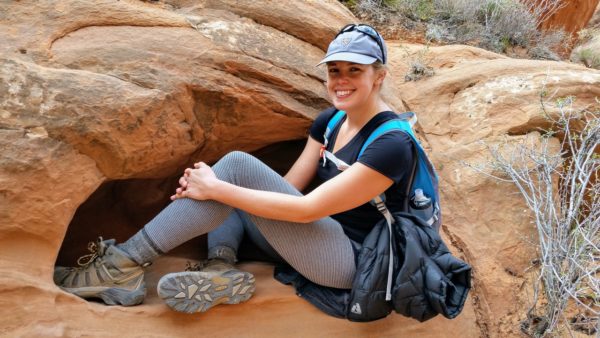
What is your position or role in the DESI project?
I’m a postdoc at the University of Utah. My formal DESI role is chair of the collaboration’s Education and Public Outreach committee.
Where were you born and where do you live now?
I was born and grew up in Portland, Oregon. I now live in Salt Lake City, Utah, but before that I called California home for over 15 years.
What do you do as part of DESI?
Primarily I work on creating mock galaxy catalogs for characterizing the DESI luminous red galaxy (LRG) sample and (hopefully) improving models of small-scale galaxy clustering. I also did a lot of visual inspection of LRG spectra in preparation for the main survey, and do the occasional remote observing shift as a Support Observer. A big part of my role on the collaboration’s Education and Public Outreach committee is updating the public DESI website (where you’re reading this now!). I’m starting to work on the pages that will announce DESI science results and data releases as they become available.
What is the most interesting or exciting thing about your job?
The data I use in my research comes from light that has traveled halfway across the observable Universe (OK, not quite that far, but still astounding!). I’m continually amazed that humanity can unravel the history of the cosmos itself with just ancient photons that survive the journey to our telescopes. We’re such a tiny speck in an incomprehensibly vast universe that it doesn’t seem it should be possible, but it is!
Any advice for an aspiring scientist?
There isn’t one right path you must take to become a professional scientist. College was challenging for me, so much so that I didn’t apply to graduate school right away. Even though I’d wanted to be an astrophysicist ever since I learned that’s an actual job, college left me seriously questioning whether I had what it takes to succeed in grad school. It was several years before I rediscovered the resolve to apply and built up the experience to craft a successful application.
Also, while easier said than done, don’t be intimidated by what you don’t yet understand or the skills you don’t yet have.
What do you do for fun?
I like to cook and bake, “train” for half marathons, and explore the abundant natural beauty surrounding Salt Lake City. Occasionally I even find time to work on my latest craft project: a cross-stitch of a spiral galaxy that I started over two years ago. If I thought I could make a living at it, I would be an artist who focuses on abstract geometric sculptures.